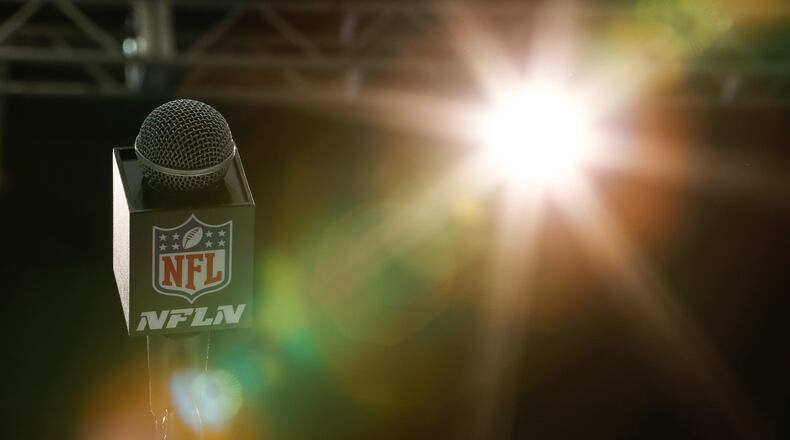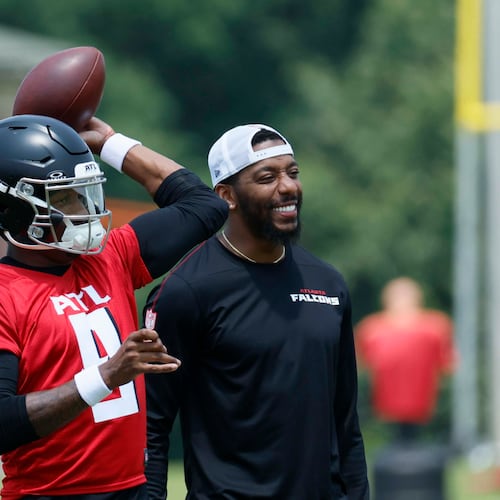The NFL draft is a subplot riddled with inconsistencies, unknowns and overthought. Yet it’s never held more uncertainty than it will this week.
The coronavirus pandemic has made for unprecedented times. The NFL chose to move forward with its offseason schedule as the leagues around it, then in season, were postponed or canceled. The first wave of free agency went off without a hitch, but now the league moves into a not-so-simple process.
Thursday marks the beginning of the NFL draft, which evaluators feel features a deeper pool of talent than in recent years. It already was difficult to do positional rankings with this group, but the pandemic has complicated matters to the point that this is expected to be one of the more unpredictable drafts in some time.
» MORE: How to watch, stream 2020 NFL Draft
While the combine happened as schedule, the rest of the process lacks normalcy. Teams and players have met only through video conferencing and phone calls. Pro Days across the nation were canceled. If a player wasn’t at the combine, he won’t get the chance for in-person interviews or organized athletic testing.
Virginia linebacker Jordan Mack, a Lithonia native, is a projected late-round selection. He attended the combine but didn’t participate in drills after having ankle surgery following the season. Mack, whose injury history is a talking point with teams, said he would’ve been 100 percent for his Pro Day, which was scheduled April 8.
“It hurts because you don’t get to show your health and actually talk with teams as much as you’d wanted to,” Mack said on a conference call. “But it doesn’t really hurt too much. … You just leave it out there on the film. Your film speaks volumes.”
Mack considers himself fortunate to have attended the combine, which was the last chance for teams to ideally interact with prospects.
“It’s huge from the standpoint that it verified my numbers, height and weight,” he said. “They were able to speak to me, put a face to a name, see what kind of individual I was.
“From a medical standpoint, see that my ankle was healing up properly and see that the other injuries I had – that I’m fine, healthy. That was huge that I was able to get in front of NFL scouts and show them what kind of individual I was.”
» ALSO: Position-by-position draft breakdown
Defensive tackle Eli Hanback, Mack’s teammate, wasn’t invited to the NFL combine and will likely be an undrafted free agent. While he participated in an informal Pro Day in Richmond, it wasn’t the same as having 32 teams represented at your school. A Pro Day could’ve been the difference in him getting drafted, or perhaps prompt another team or two to make him an offer Saturday night post-draft.
“It was a bummer,” Hanback said. “I know a lot of teams wanted to see us perform. That was our time to shine. I was training with J-Mack, and we’d been putting in a lot of work in the weight room and field. That was a bummer.”
Hanback recently had a phone interview with the Chargers, but much of his information is coming through his agent. “They’re doing the best they can. You can’t go to facilities or anything like that. They’re scrambling to access a lot of guys just based on film, without Pro Days. It’s phone calls, hearing from your agent, a lot of third-party stuff going on for me personally.”
The in-person element, or lack thereof, is a crucial one. Like any walk of life, meeting in person is optimal. It’s challenging for a franchise to develop a true understanding of a player’s character and mental makeup by a 30-minute Zoom call.
Former Buccaneers general manager Mark Dominik explained the importance of that now non-existent piece of the puzzle during a conference call April 14. Dominik is an analyst for SiriusXM NFL Radio after spending 1997-2013 with the Bucs as the director of pro scouting and general manager (2009-13).
Dominik pinpointed a little-known cornerback named E.J. Biggers from Western Michigan. Biggers ran a 4.41 and had a 38-inch vertical at his Pro Day. The Bucs brought him in as one of their allocated 30 visits and took him in the seventh round.
“He was nowhere in the vicinity of being drafted,” Dominik said, recalling Biggers’ initial status. “We brought him in on a ‘30 visit’ on one of the last days. Just one other team brought him in. I’m thinking ‘great, I can get him in the seventh.’ If it wasn’t for a Pro Day and 30 visit, I don’t know if we would have found E.J. Biggers.”
Biggers was never a household name, but he was a worthy seventh-round choice. He played eight seasons and started for sixth — both rarities in late-round draft choices. If he hadn’t impressed athletically at his Pro Day and shown Tampa Bay enough in his in-person meeting, he might’ve never gotten the same opportunity. Going undrafted could’ve lost him in the shuffle.
“I feel bad for the guys who didn’t have Pro Days,” Dominik said.
Falcons general manager Thomas Dimitroff has a similar story that unfolded last year. Ohio State cornerback Kendall Sheffield was unable to run at the combine after suffering a torn pectoral during the bench press. The Falcons went to his Pro Day to get a closer look.
“Going out to Columbus and having a workout where it was just us with him and spending the day with him and being around him, that kind of solidified, ‘Hey, if there is a chance to add him to the team, we were pretty clear that we would want to do that,’” Dimitroff said.
The Falcons took Sheffield in the fourth round, pointing to that afternoon in Ohio as a critical factor. But not everyone has the pedigree of Sheffield, an exceptional athlete who played at a blueblood program. Even with the injury, Sheffield wasn’t in danger of going undrafted like Biggers, Mack or Hanback.
Still, the challenges extend beyond the lower-level prospects. The Bengals have seemingly long known LSU's Joe Burrow is their guy at No. 1 overall, but that hasn't stopped them from reportedly spending hours — up to three hours a week, per NFL rules — on Zoom and calls to build a relationship with their future franchise quarterback, per ESPN's Jeremy Fowler. A pick of such magnitude requires every available resource — which isn't possible under these circumstances.
There isn’t a more fascinating situation in the class than Alabama quarterback Tua Tagovailoa, whose injury history has some teams hesitant despite his talent. His medical recheck reportedly went well, but there’s only so much confidence teams can have without up-close interaction.
Teams have seen seen Tagovailoa move around once since a hip injury ended his season in November. Last month, he posted a 10-second video of him moving his feet and throwing one pass.
Wisconsin running back Jonathan Taylor, arguably the best back in the draft, has held video conferences with Tampa Bay on multiple occasions, per ESPN's Jenna Laine, with the team presenting blitz packages to see how Taylor mentally processes that aspect of the game. Another component made easier by teams and players conferencing in person.
While lack of Pro Days hurts, but like Hanback, many players have hosted their own virtual Pro Day. Georgia quarterback Jake Fromm did so April 4, throwing to teammates Tyler Simmons and Charlie Woerner. Former Georgia quarterback Jacob Eason, who spent the past two seasons with Washington, held his own Pro Day on April 1 in southern California.
This draft presents new demands for teams and players that it may never have to navigate again. Thursday, Friday and Saturday will be uniquely looked upon through the rest of NFL history.
"This draft is absolutely huge for us, so there's no excuses, no explanations," said 49ers GM John Lynch, whose team was seven minutes from a Super Bowl victory in February. "We've got to get our work done, albeit from home. We've been killing the Zoom meetings. I should have bought stock in Zoom."
About the Author
Keep Reading
The Latest
Featured



